Let me show you how to make an Authentic Spaghetti Carbonara Recipe. We are using guanciale, what? Okay you can also use Pancetta or Bacon. I said authentic I didn't say there would be no substitutions because with a recipe this delicious and this easy, everyone will want to make it!
Much like my Penne Broccoli these recipes come together quickly and are utterly delicious!
Using ingredients like spaghetti (or any other long pasta like spaghettoni.
What is Spaghettoni?
It's similar to spaghetti but thicker and has a round shape. It means 'lengths of cord" in Italian.
What is Bucatini pasta?
Pronounced boo - kah - tee - nee
Bucatini is another long type of pasta and is also known as perciatelli in Italian. It has a hole running through the middle of the pasta, its that straw-like appearance that makes it different to spaghetti.
Along with ingredients like guanciale (pancetta or bacon), eggs, cheese, and fresh black pepper you can sit down to a creamy dinner indulgence!
What is Guanciale?
An Italian cured meat that comes from the pork (pig) cheek. It's also fatty that's why you don't use oil when cooking with guanciale. It's extremely salty (for my taste) so remain aware when adding salt with guanciale.
Cook's Tip: Don't forget about fresh black pepper when using guanciale, especially in this carbonara recipe, it complements the meat and eggs beautifully!
We absolutely love our pasta meals and I won't say dinner because pasta for us can almost always be a lunch time meal. The ease and convenience of a pasta dish makes it easier to make them so delicious! The challenge is that with every easy recipe there's always just a little technique to getting it perfect. Once you get it however, you master it.
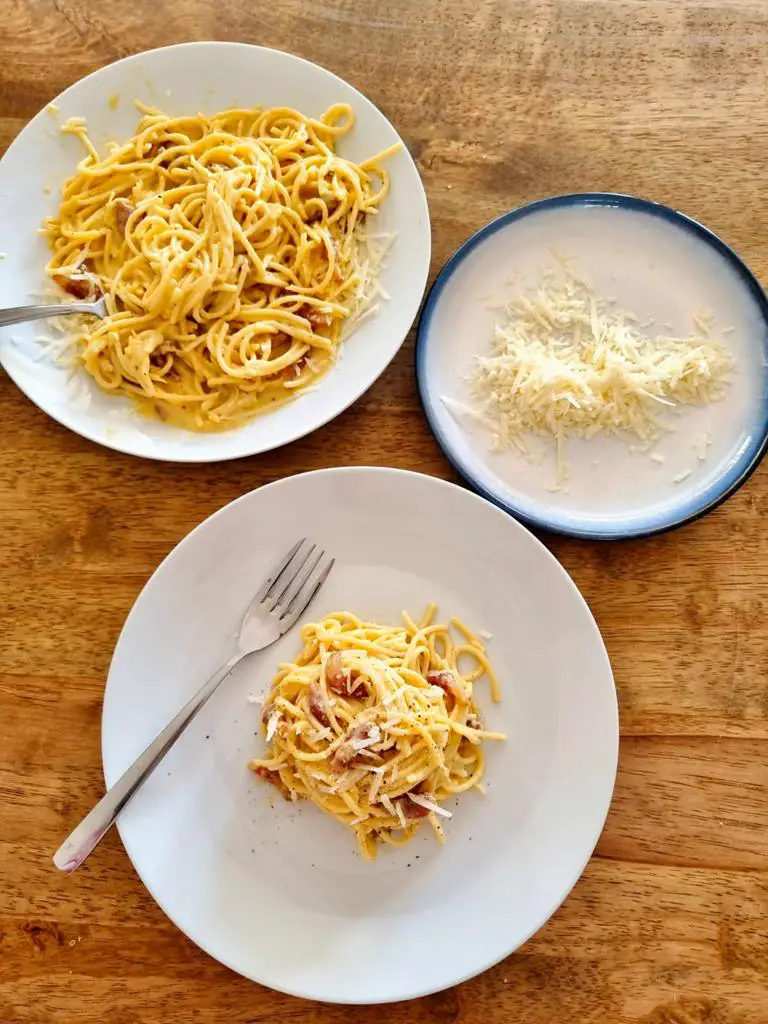
This spaghetti carbonara recipe is made using the authentic Italian ingredients but I have also shared substitutes. Depending on where you are, it's not always easy to find some of the ingredients, this way you can use what you have and still enjoy a carbonara.
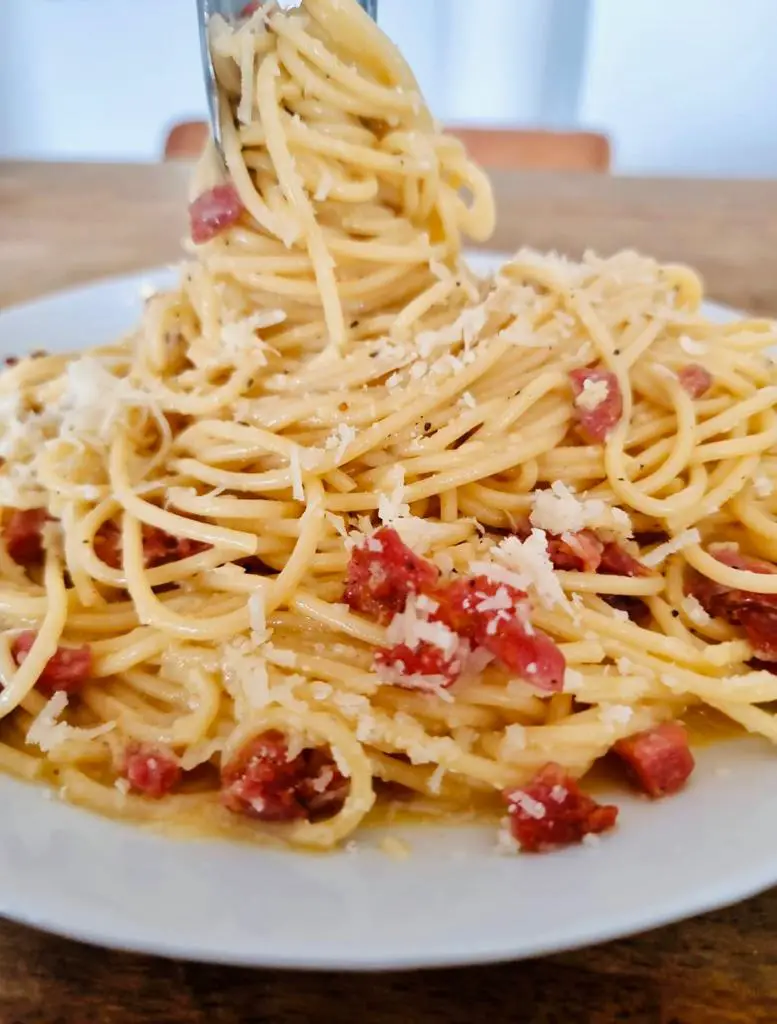
Is cream added to carbonara?
The traditional Carbonara recipe does not use cream just eggs and pecorino cheese which together with pasta water, help to create cream.
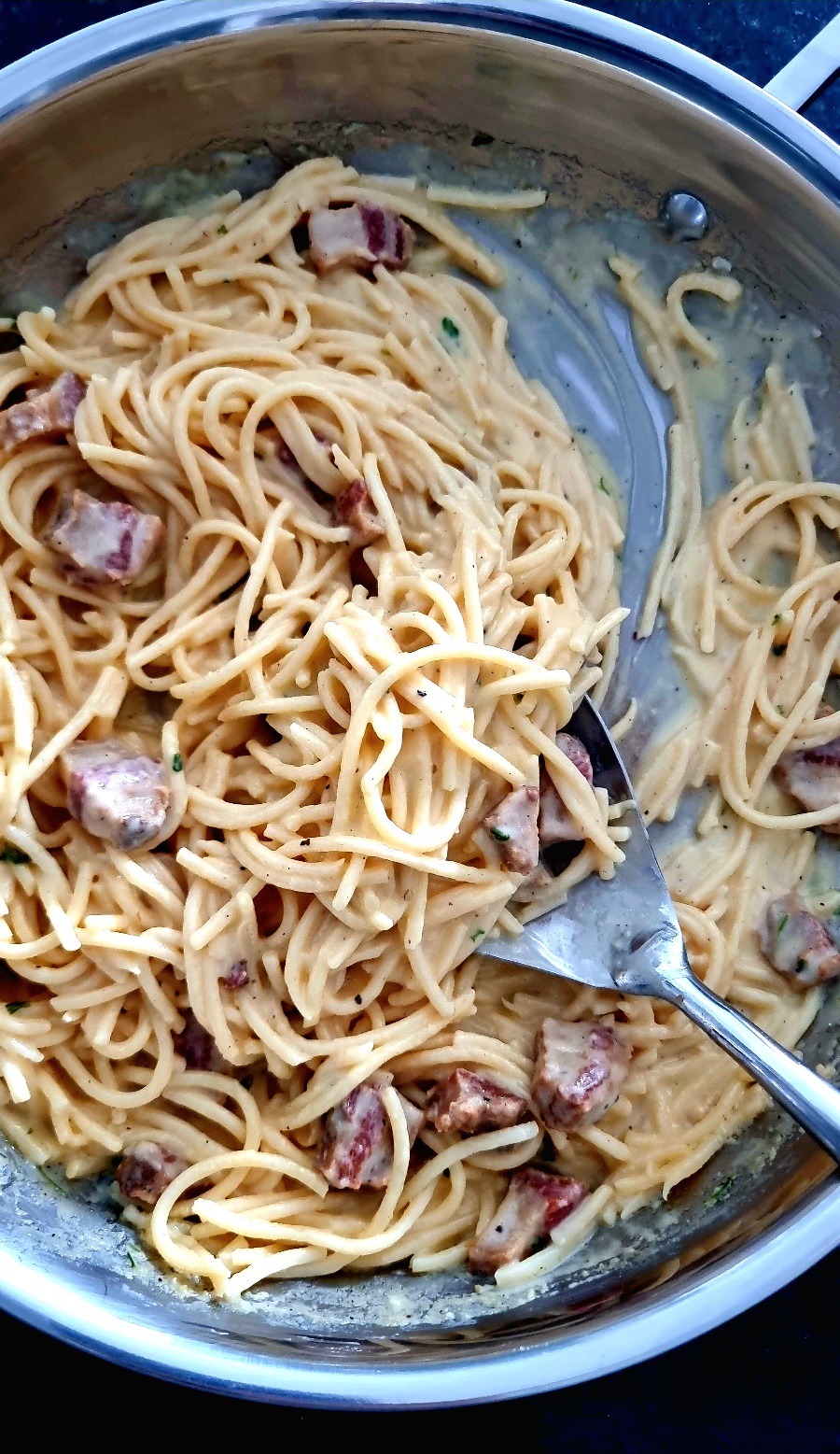
What to not add to an authentic spaghetti carbonara
Cream, Parmesan cheese, garlic, bacon, milk amd onions. The authenticity of carbonara is in the few yet best quality ingredients that you can find.
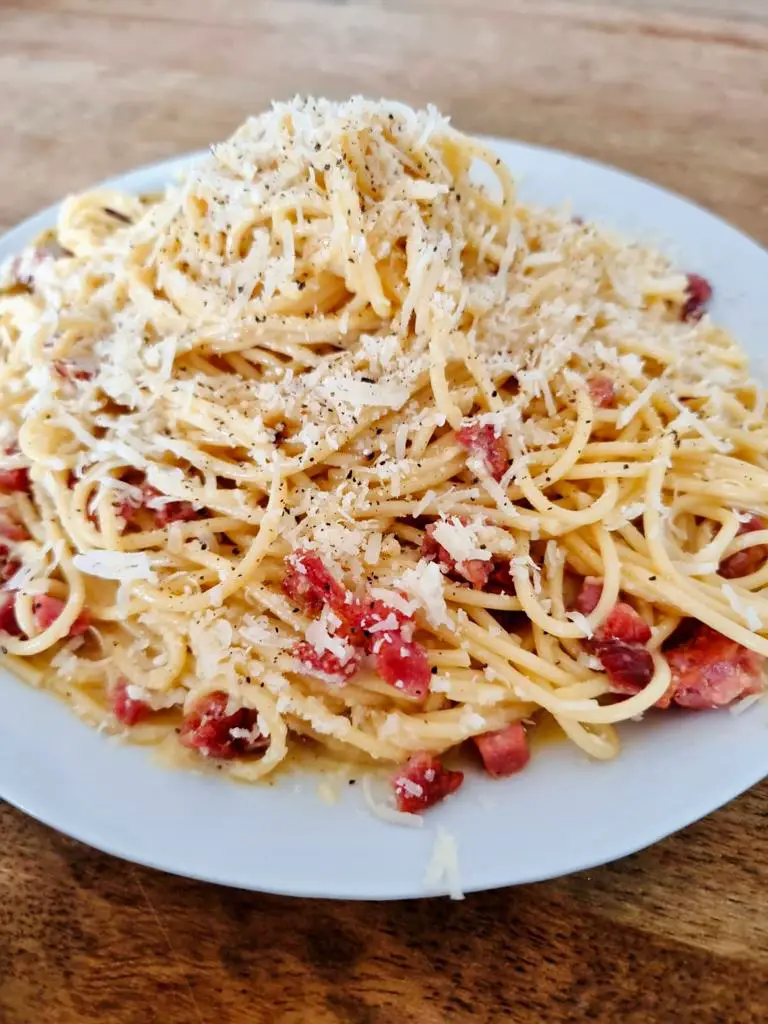
Ingredients In Spaghetti Carbonara
These are the 5 ingredients for an authentic spaghetti carbonara.
Spaghetti or Spaghettoni
Salt Guanciale is very salty, so I only add salt to the pasta water not the other ingredients.
Guanciale You can also use pancetta or bacon.
Eggs The only think to advise here is that you use real fresh eggs. Farm fresh is even better.
Cheese Lots of recipes call for Parmesan cheese but the authentic recipe uses Pecorino Romano cheese for carbonara.
Pasta water It's also an essential ingredient in this recipe since there's no cream or sauce! Don't toss it out, you need it to create a creamy carbonara.
Black Pepper A key ingredient so use fresh black pepper.
Pecorino Romano and Parmigiano Reggiano are not the same cheese types. Flavor and taste is different and more importantly Parmigiano is made from cows milk and Pecorino Romano is sheep's cheese. The more traditional for carbonara is Pecorino Romano.
Method in Spaghetti Carbonara
You can find the full recipe card below.
Spaghetti Cook your spaghetti in boiling salted water. Add the spaghetti and use a spoon to push the spaghetti down into the pot. When you push it down you're covering all the spaghetti with water which allows even cooking so there's no need to break the spaghetti.
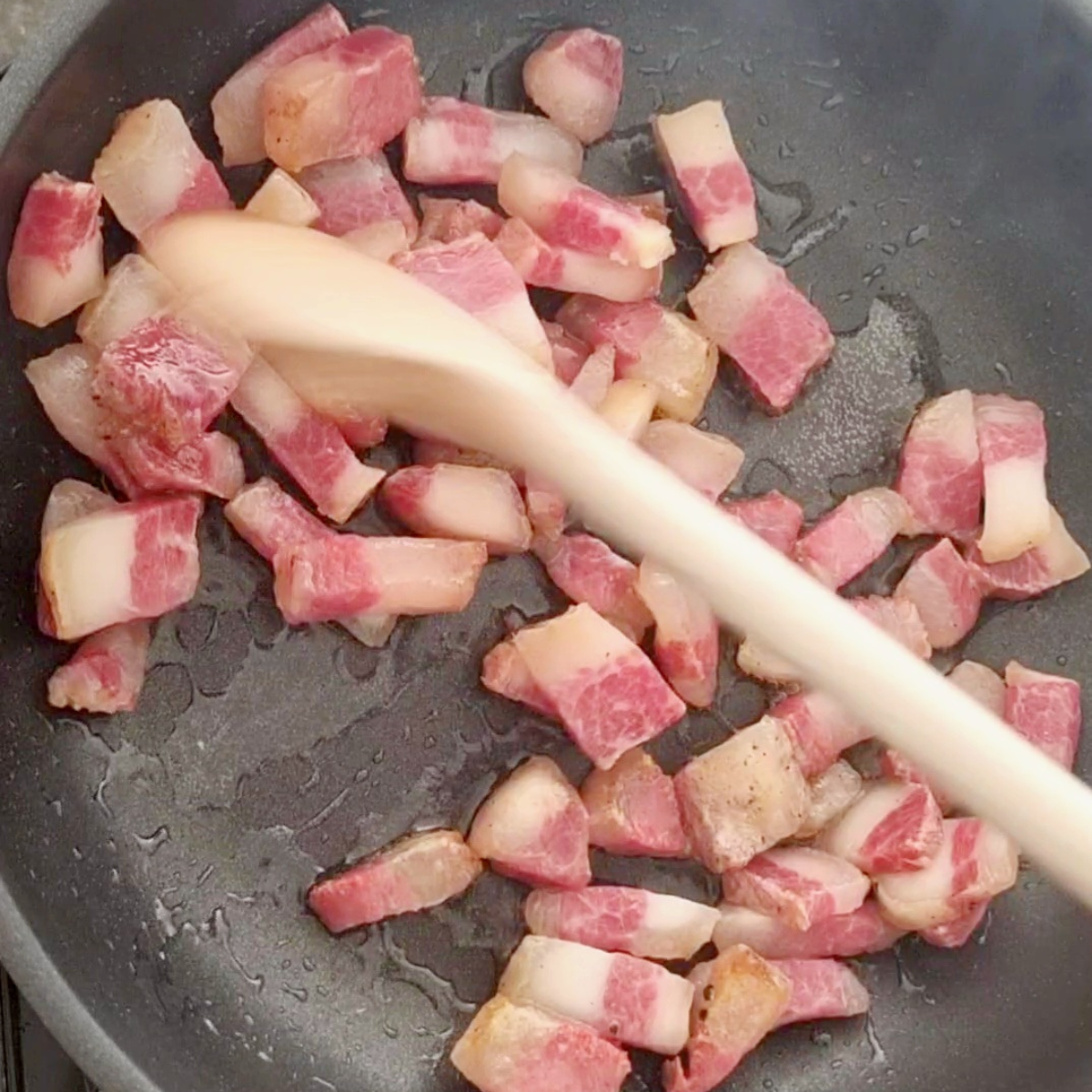
Guanciale Dice the guanciale (or pancetta) and use a non stick cold pan. There's no need to heat the pan and no oil is added. We want to render the fat and there's a lot of it in guanciale.

Eggs I use 4 whole eggs. You can also make this recipe with 3 eggs: 2 yolks + 1 whole egg.

Cheese Add half a handful of cheese to the beaten eggs with a pinch of fresh black pepper and whisk with a fork till combined. Add a splash of the pasta water (like 1 tablespoon) just enough to make it a bit thinner but not more!

Salt Besides adsing salt to the pasta water there is no other salt used in this recipe. The Pecorino Romano and guanciale is very salted and I don't think it's necessary.
Black Pepper A key ingredient so use fresh black pepper. Add it into the guanciale /pancetta when you see it's almost ready. When the color is deepening to that golden brown color, add it and give the meat a mix to catch the pepper. Also to the eggs and cheese give it another layer of fresh black pepper.
When you add the spaghetti the pot, lower the heat and maybe even move the pot off for 10 seconds or so to allow the pot to cool a little.

Mix the pasta into the guanciale and then pour the egg and cheese in with some of the pasta water.
As soon as the water is in, use muscle power and mix everything together quickly. At this point immediately move the pan OFF the heat or your eggs will scramble!

Spaghetti Carbonara
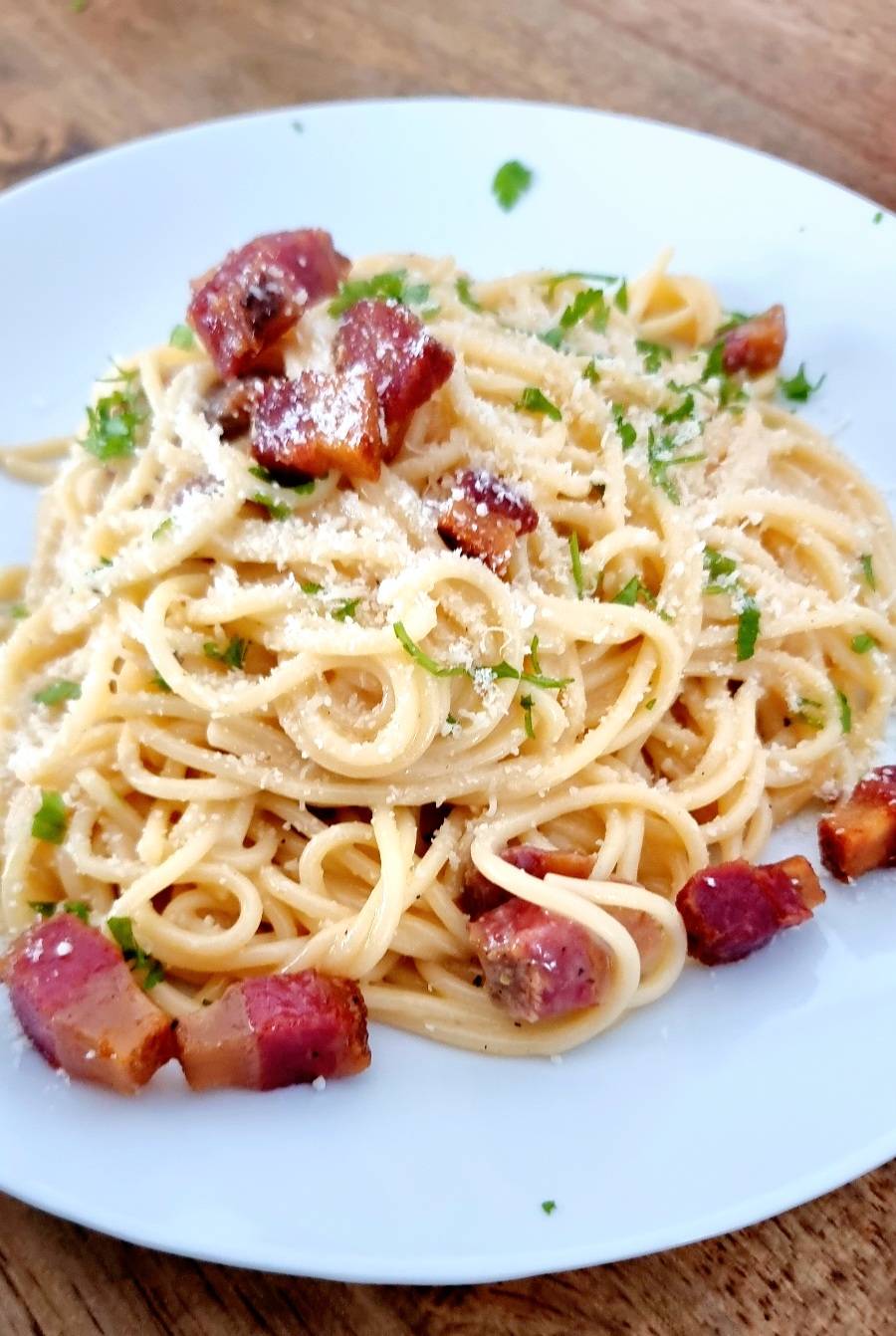
FAQ's Spaghetti Carbonara
What is Guanciale?
Guanciale is an Italian cured meat prepared from pork jowl or cheeks. Guanciale, is the Italian word for 'cheek' so 'pigs cheek' is what it is essentially. It's from the pig's cheek, is surrounded by fat and is also cured meat and very salty.
The best type of eggs to use for recipes that call for eggs?
You know, I always say that eggs are like other sensitive foods like chicken and seafood. I think that one of the worst ways to get a stomach bug or any type of food related side effects is from those 3 foods. If you are going to be using eggs, seafood or chicken, try and make sure that these products are from a very fresh product store or better still from 'farm to table'. If and when I have to buy eggs from a store a personal choice is pasteurized eggs.
When To Add The Eggs To The Spaghetti Carbonara
You add the eggs after you've added the spaghetti to the guanciale. Make sure you have the heat on very low otherwise your eggs may immediately turn to scrambled egg! If you are not familiar with spaghetti carbonara then remove the pot off the heat when adding the eggs.
Cooks Tips For Spahetti Carbonara
Remove access oil
Too much oil from the guaciale can ruin the dish so scoop out any access oil. You can also use kitchen tissue paper to soak up the access.
Salt the pasta water
Every time you're cooking pasta, salt the pasta water properly. Pasta cooks in salted water it doesn't cook in a pinch of salt it needs properly salted water.
Start lowering the heat of the guanciale. This is in preparation to getting the pan to cool down.
Cool the temperature of the pan down
With the access oil out of the guanciale, pour about a ladle or two of pasta water into the pan. I often say that's the start of my cream and the base for the pasta.
Lower the heat when adding the pasta
The stove must be on very low before you start transferring the spaghetti to the guanciale.
As you bring the spaghetti over, mix and lift each batch with your tongs. Its a 'cooling down' technique that helps creates a bit of air for the spaghetti and guanciale.
Stove is very low and the food is not simmering or cooking. Add the eand then add
And that's all there is to it! The technique lies in controlling the heat, not adding too much pasta water and adding the eggs at the right time and temperature.
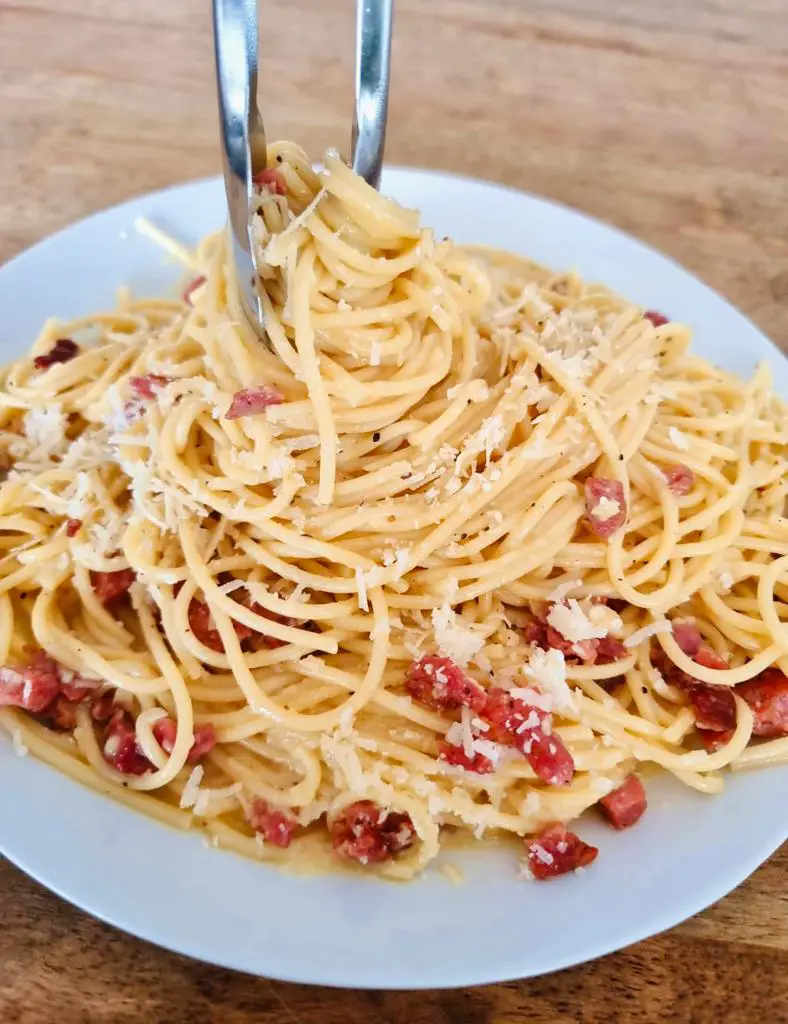
- Control the salt intake: If you are using Pecorino cheese as per recipe card below and guanciale, you don't need to add salt at all to anything except when cooking the pasta because both Pecorino and guanciale are very salty.
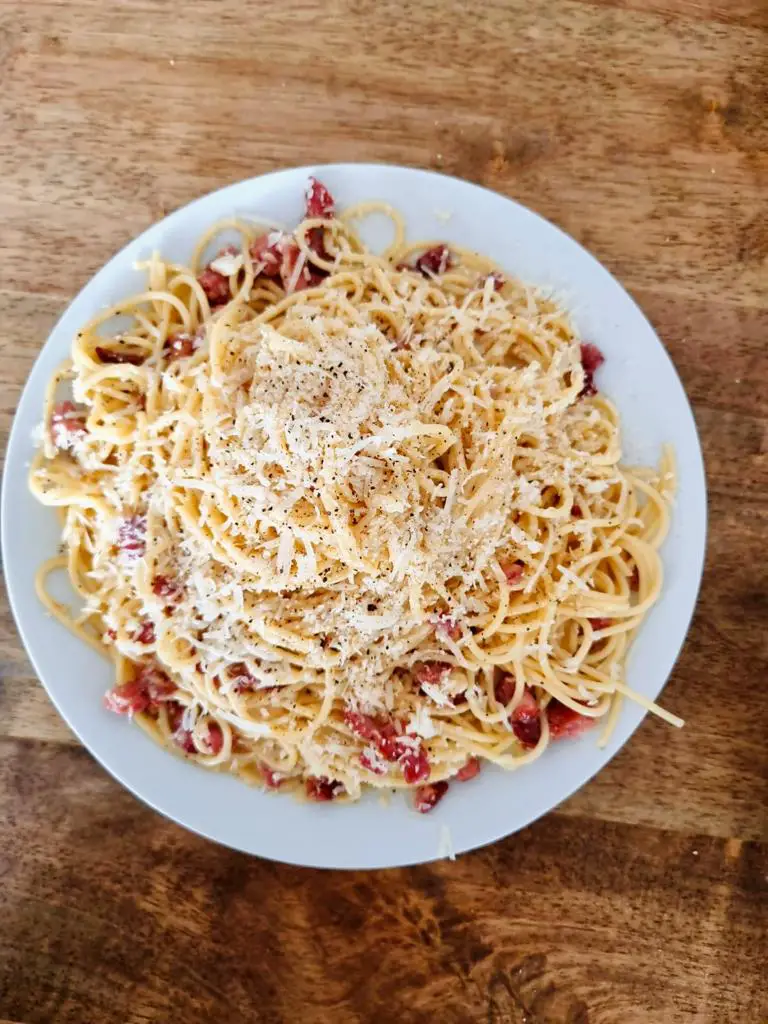
How To Serve Spaghetti Carbonara
Serve this classic spaghetti carbonara on it's own or you can also serve it with a side of crusty homemade bread or Garlic, Cheese and Herb Toast. Try a Greek Salad, Tomato Cucumber Salad or Mediterranean Salad.
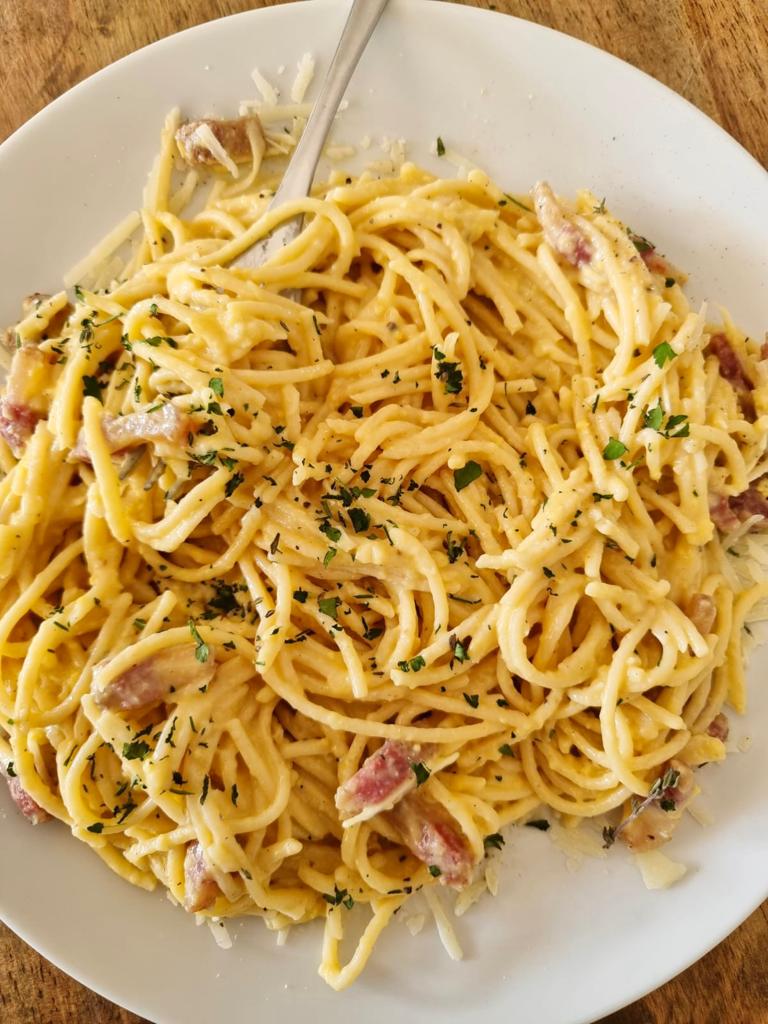
More Pasta Recipes
- Lasagna Rigatoni Pasta Bake
- Creamy Pasta Chorizo
- Pasta All'Arrabbiata (Spicy Pasta)
- Spicy Sauce Pasta
If you try this Spaghetti Carbonara please feel free to leave me a comment and a star rating! And if you take a photo of your dish and share it on Instagram, please tag me @anosmickitchen and use the hashtag #anosmickitchen because I love seeing your remakes! Happy cooking????
Authentic Spaghetti Carbonara Recipe
Ingredients
- 300 grams Spaghetti or Spaghettoni (
- 200 grams Guanciale or Pancetta or bacon
- 100 grams Pecorino Romana or Parmesan cheese
- 4 eggs whole
- fresh black pepper
Instructions
- Cook The Spaghetti Bring a pot of salted water to the boil. Add the spaghetti and use a spoon to push the spaghetti down immersed into the water.
- Cook The Guanciale Chop the guanciale into cubes and add into a non stick cold pan. Let the guanciale come to medium heat with the pan. No oil. Fry until done, crisp and the fat has rendered. Scoop some of the oil out if it's too much or use kitchen tissue paper to soak up the access oil
- Prep The Cream (Eggs & Cheese) ii.Meanwhile, crack the eggs into a bowl and whisk together. Take a bunch of cheese, like a half handful) of the grated cheese and whisk into the egg. Add a splash of the pasta water and a pinch of black pepper into the egg and cheese and whisk it all together.
- Combine Turn the heat very low with the guanciale and transfer the spaghetti to the guanciale using a pair of tongs.As you bring the pasta across, keep stirring and lifting the spaghetti, keep going until you've transferred all the pasta.
- Turn the heat off: There's no sizzle from the stove, its hot add the egg and cheese and keep it moving, as in keep mixing, lifting the spaghetti to create air and the movement of to stop the eggs from curdling.If you need a little water then add a little pasta water to help with the sauce.
- Finish with fresh black pepper and cheese. Enjoy!


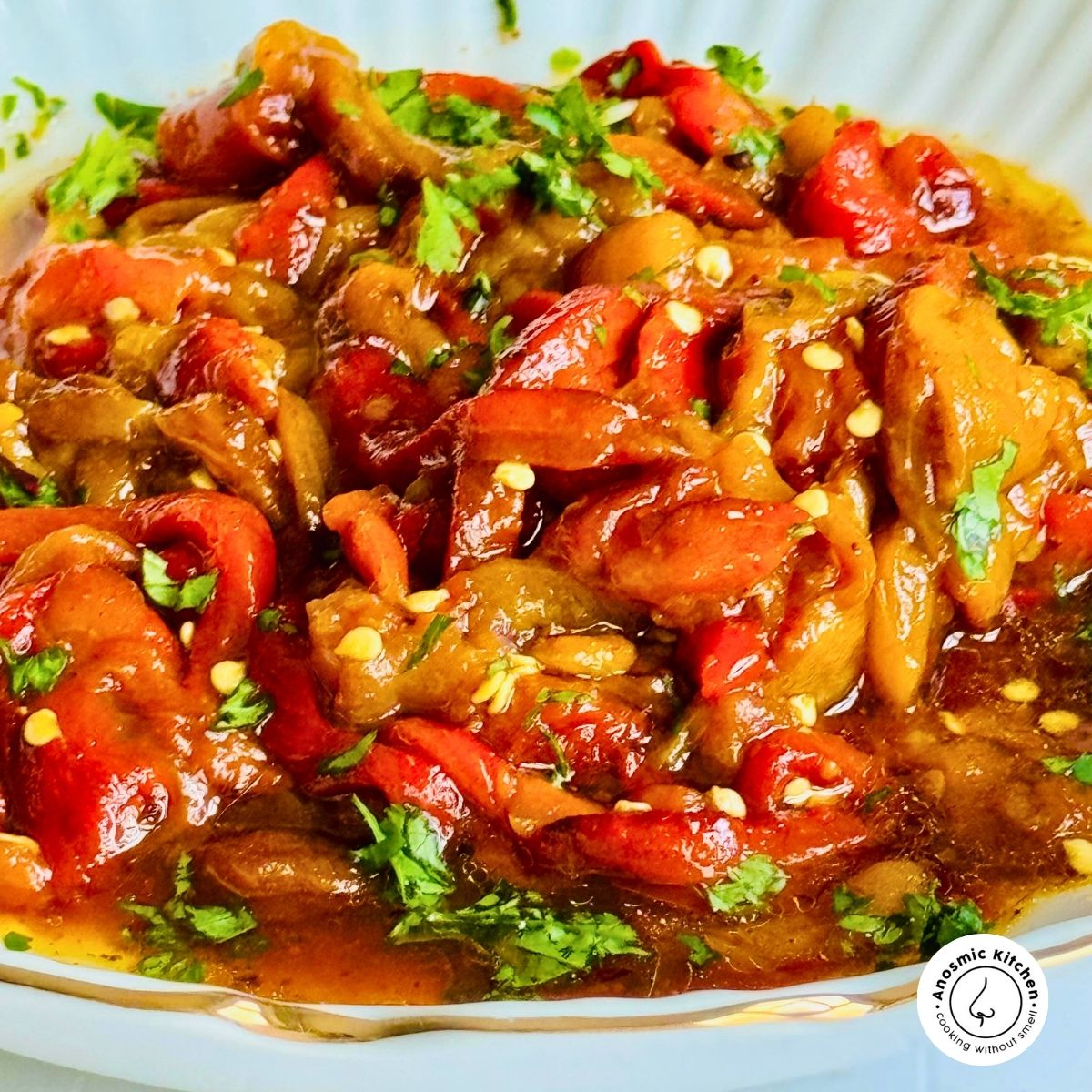

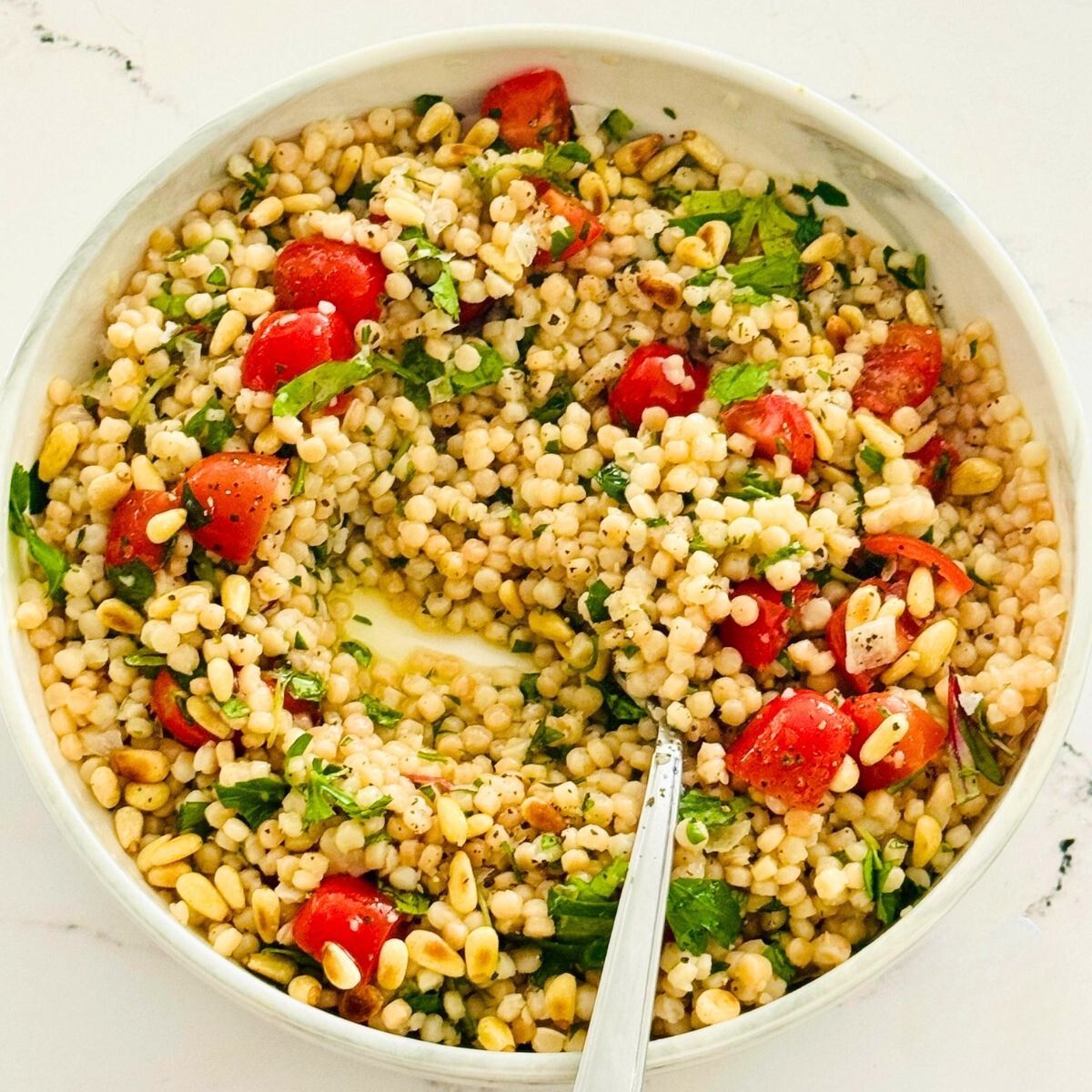

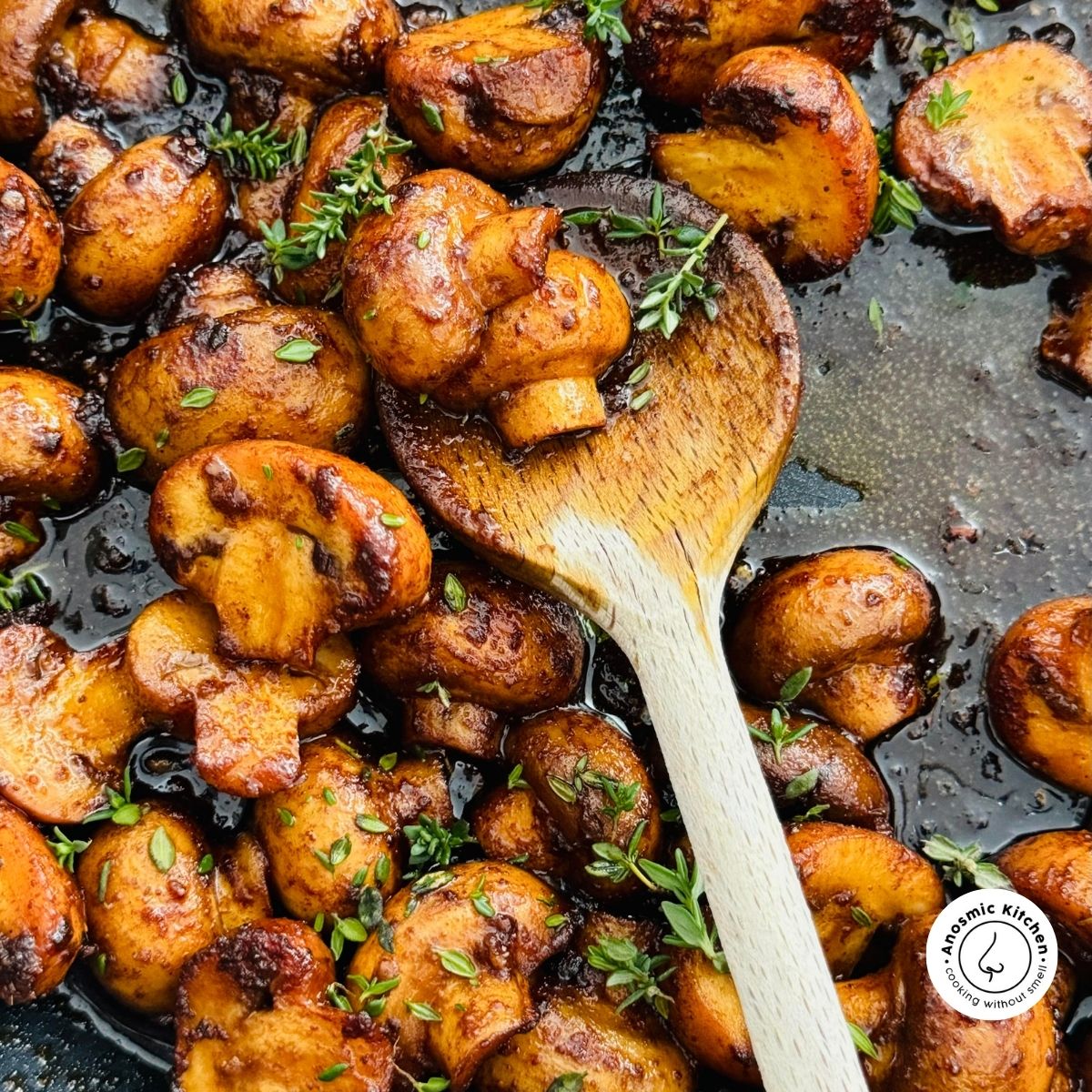
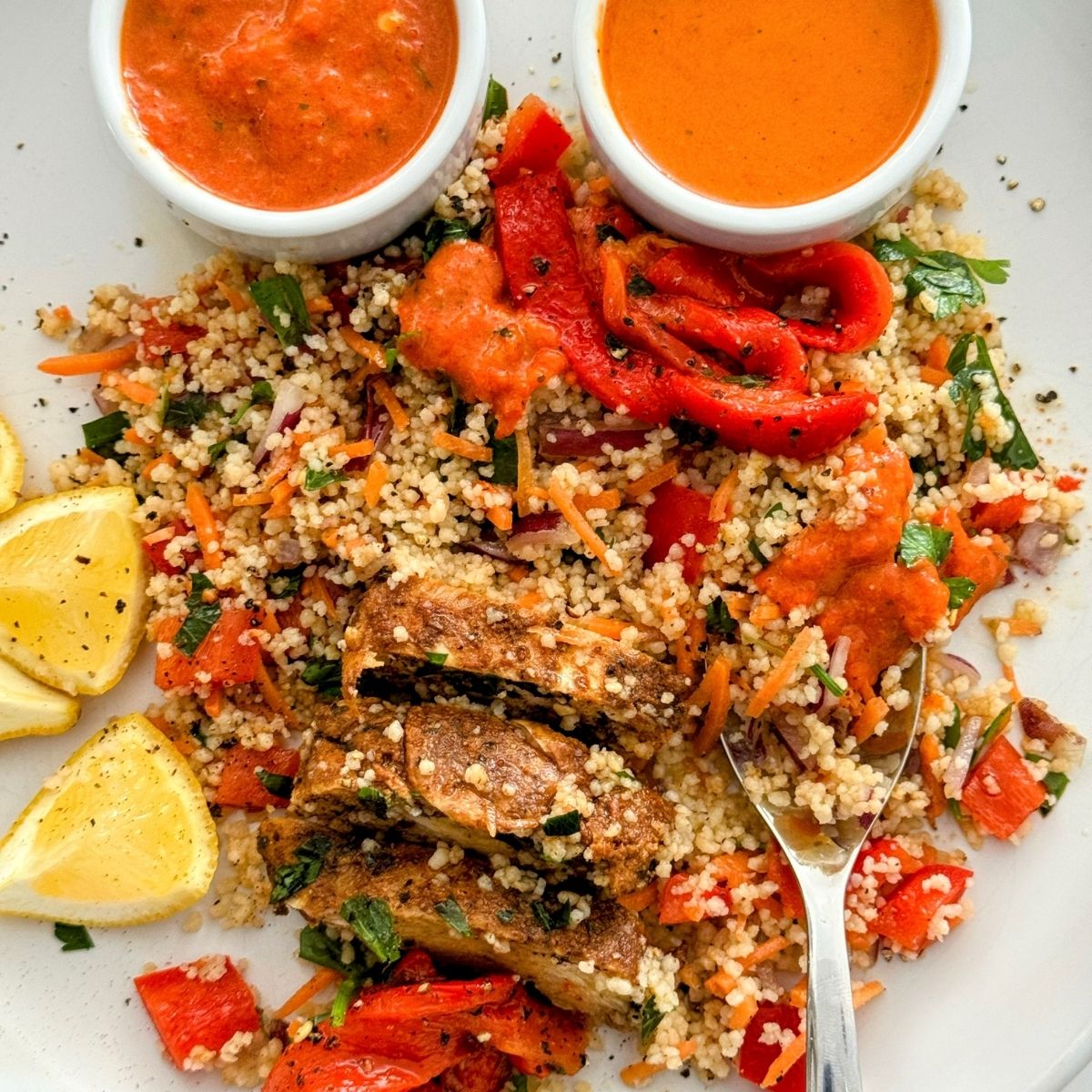



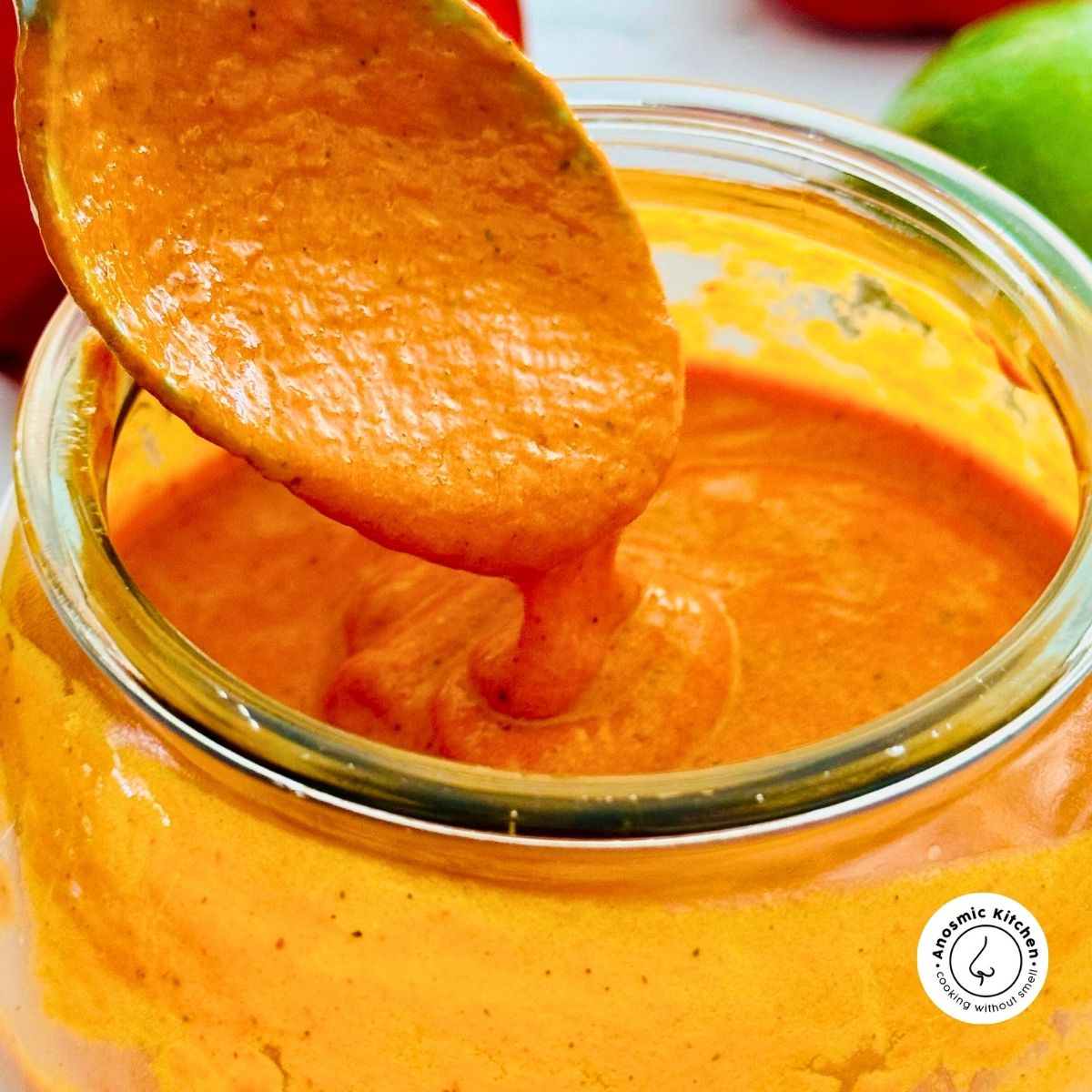
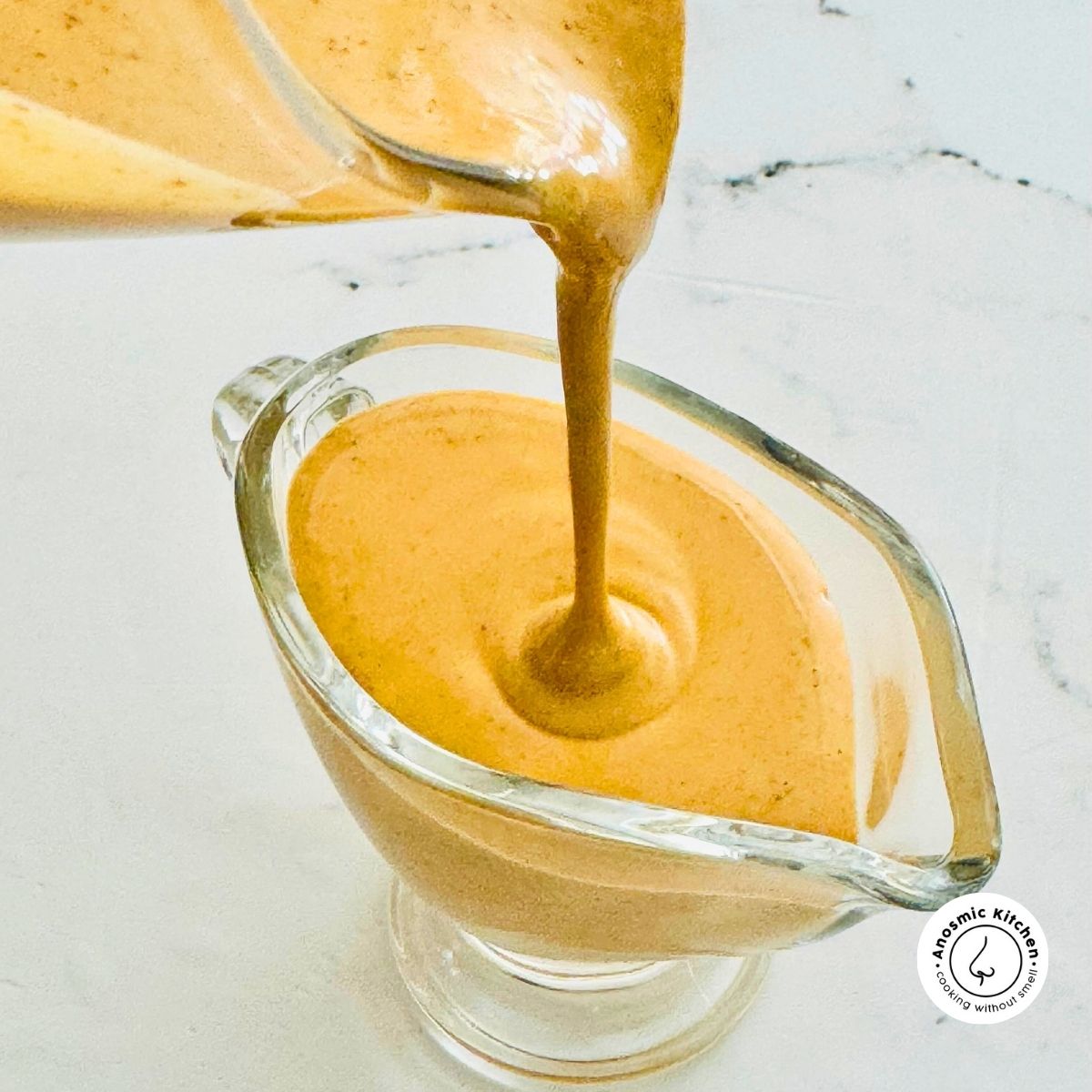

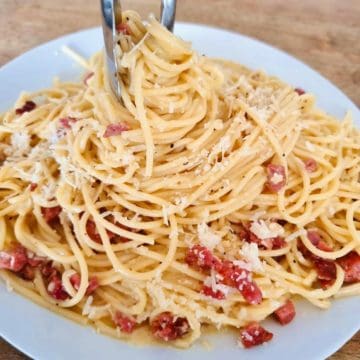
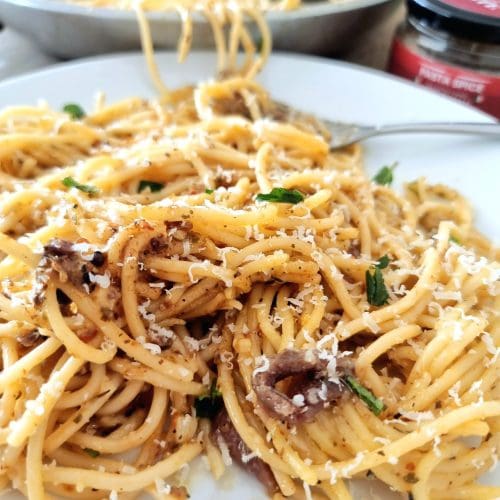
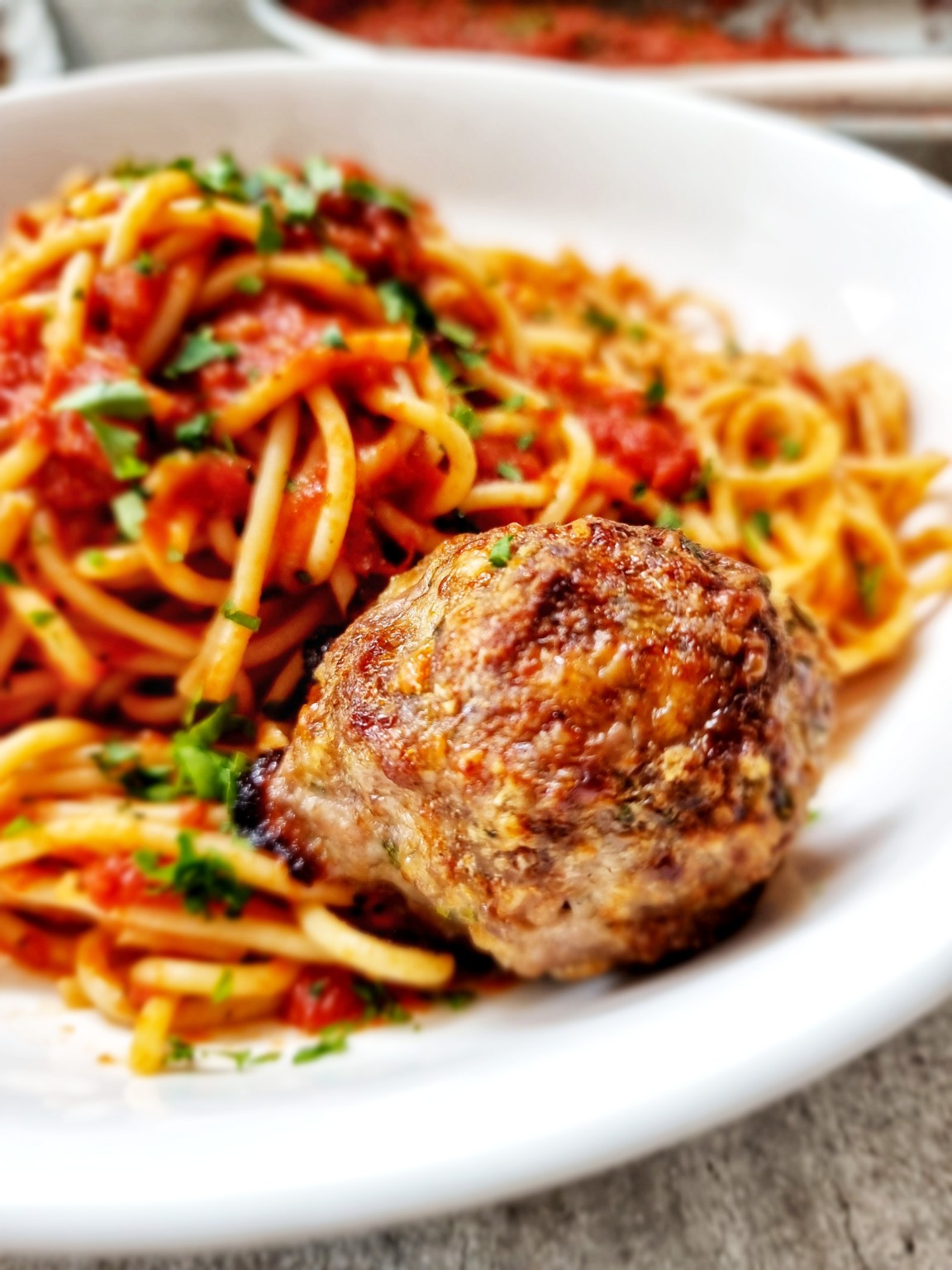
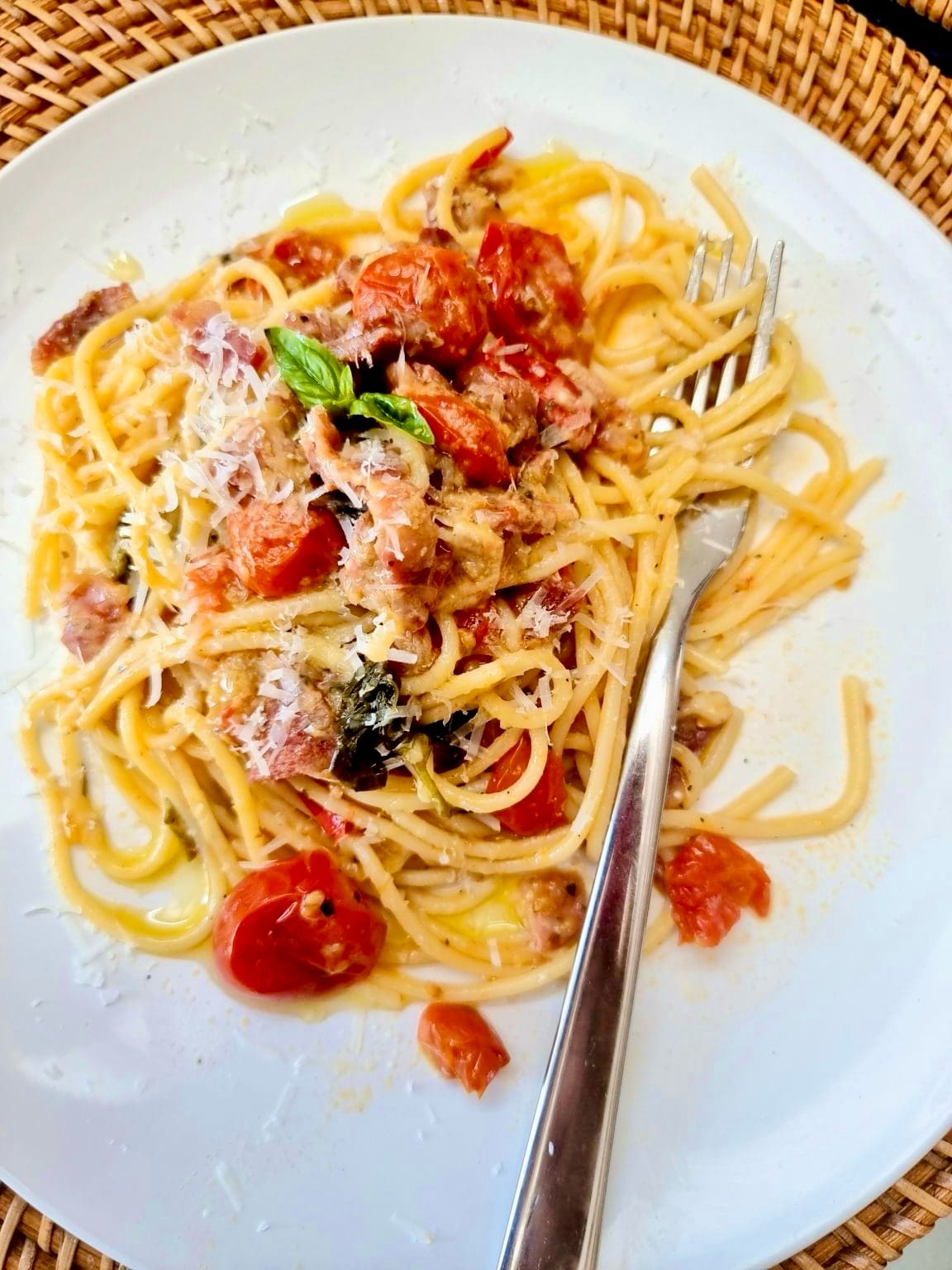
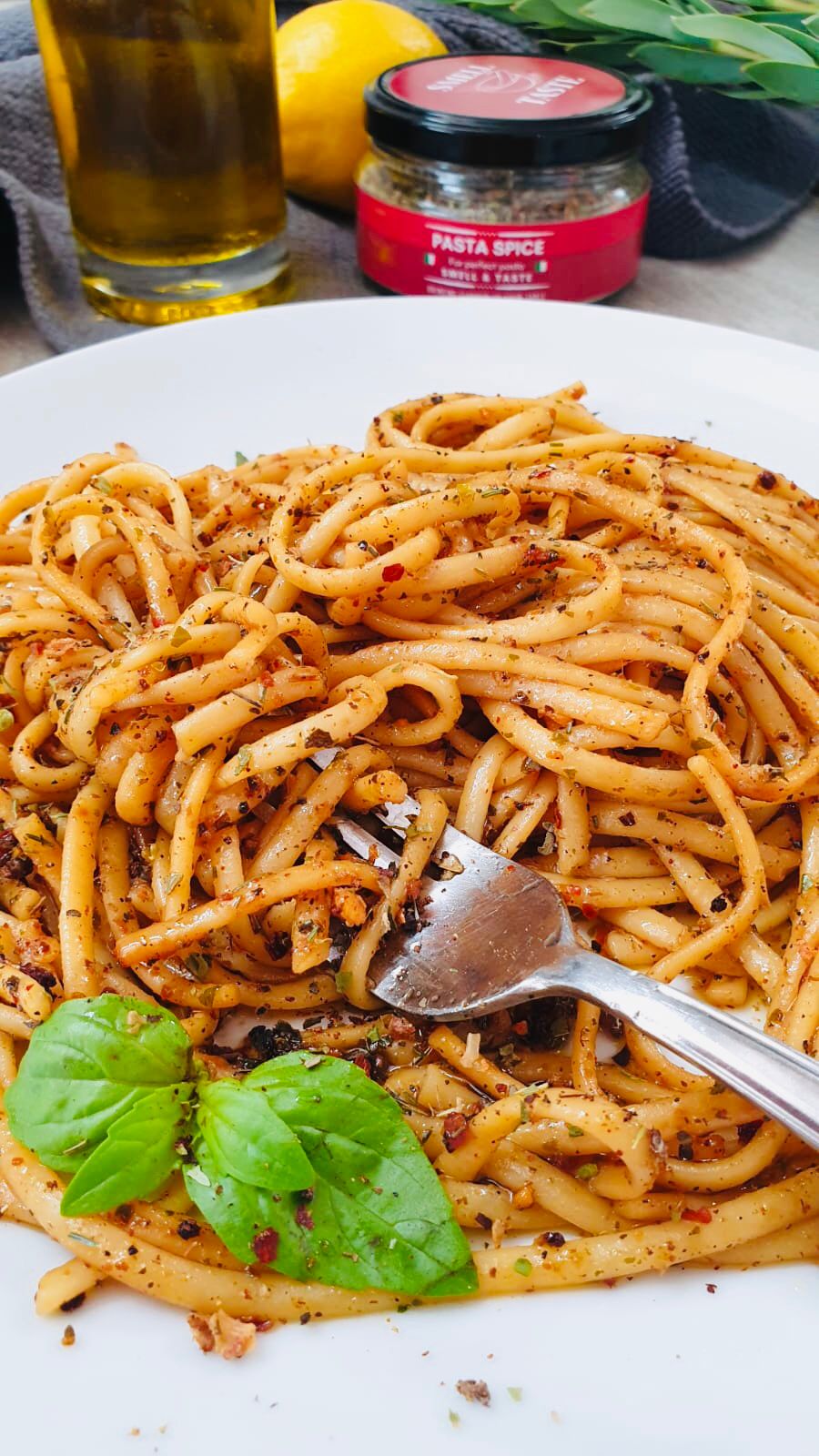
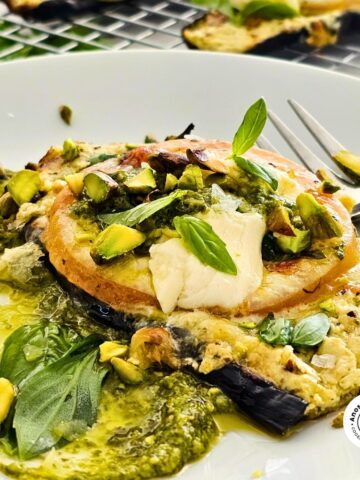
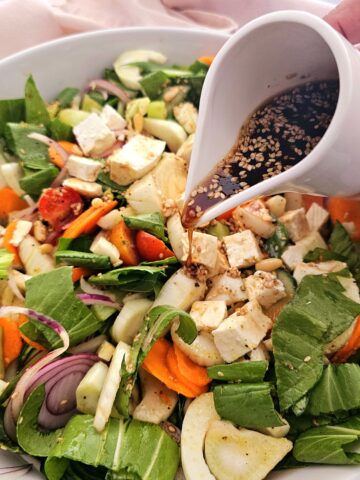
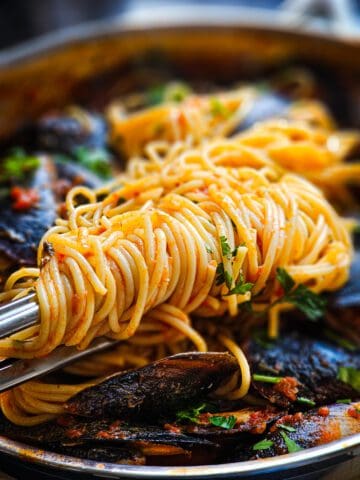
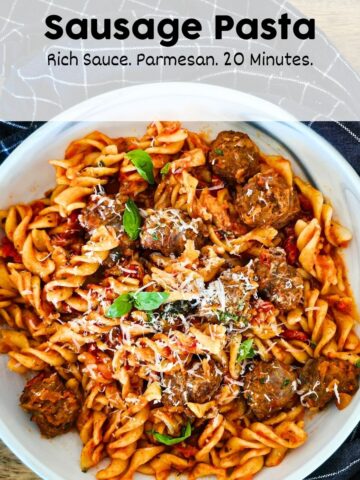
Comments
No Comments